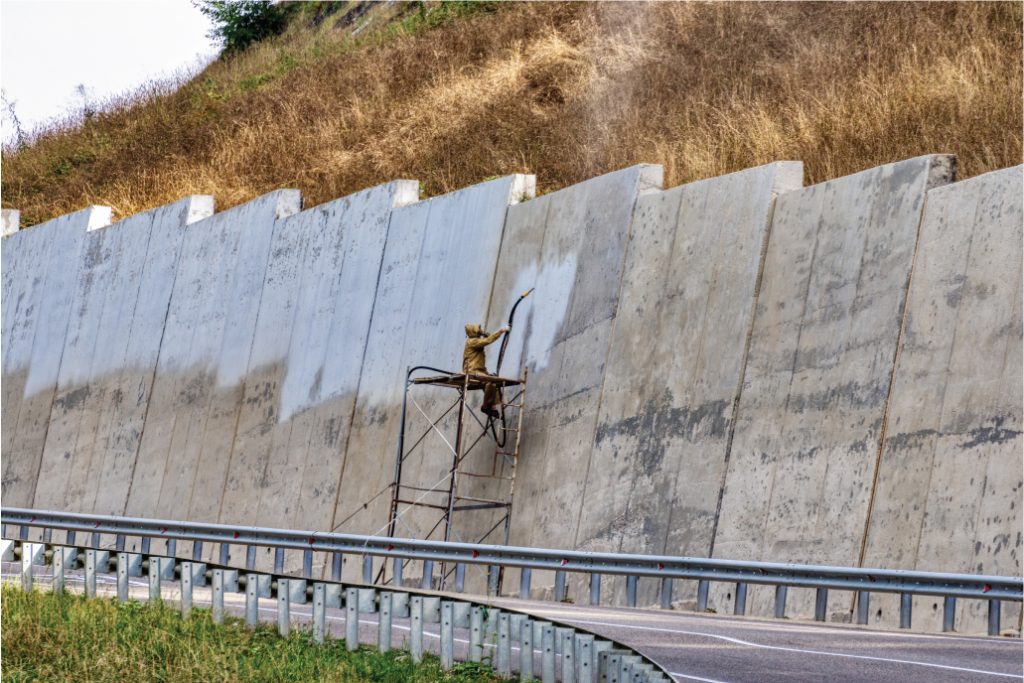Shot Blasting & Sandblasting: What’s the Difference Between Them?
2 July, 2019Abrasive blast cleaning is a popular method of industrial cleaning that works by shooting powerful streams of abrasive materials at a surface, forcefully breaking down the superficial layer to reveal the clean layer underneath. This method of cleaning has soared in popularity over the past few decades, giving rise to further subservices of abrasive cleaning that utilise specific techniques or materials. Shot blasting and sand blasting are two examples of this. In this article, we’re going to explain how the services differ and explore their individual benefits.

What is shot blasting?
Shot blasting is a cleaning method that involves using centrifugal or mechanical force to shoot a rapid stream of abrasive material at a surface. This force is typically achieved as a result of a rotating turbine wheel. The abrasives used in shot blasting can vary, depending on the targeted surface and the nature of the project. Steel is most common, but glass, plastic and even aluminium oxide are sometimes used. Shot blasting is an ideal solution for cleaning steel and other ferrous metal surfaces.
What is sandblasting?
Originally, sand was the sole abrasive used in sandblasting, hence the name. But over time, it became evident that using sand had various difficulties; its moisture content made it difficult to spread with compressed air, and a lot of natural sand contained contaminants. It eventually got phased out. Nowadays, alternative abrasives are used in sandblasting. Here at J Radford, we use fine and recycled glass for accurate, effective results.
These days, the key difference between sandblasting and shot blasting is the mechanism used to propel the stream of abrasives. In shot blasting, centrifugal or mechanical force is used; in sand blasting, it’s compressed air.
Sandblasting is particularly effective at cleaning soft and sensitive materials being readied for final finishes. This is because sand blasting, in addition to cleaning the surface, can improve the surface’s mechanical profile. This makes it easier to administer painting or coating to the surface.
Which is better? Shot blasting or sandblasting?
Neither method is outright better than the other; there are advantages and disadvantages to using either. Take a look at the benefits of the two:
Sandblasting:
- Sand blasting is a less forceful procedure. This makes it less invasive and less likely to cause any damage.
- Sand blasting is typically cheaper than shot blasting.
- The sandblasting process if more flexible.
- Sandblasting can improve the surface’s mechanical profile, making it easier to administer painting or coating.
Shot blasting:
- Shot blasting is more effective against tougher materials.
- Shot blasting is environmentally friendly. It generates minimal byproducts and eliminates the use of non-eco friendly chemicals.
- Shot blasting helps to remove rust and corrosion from a surface.
At J Radford Group, we offer shot blasting and sandblasting among our extensive range of services. Our sandblasting services utilise the medium of recycled glass. Our team are fully trained and possess a wealth of experience in the industry, enabling us to deliver effective results that are efficient and long lasting. Our services are available to customers throughout London. Simply give us a call or contact us online to arrange a free quotation and site visit.
This entry was posted in Blast Cleaning, Hints & Tips. Bookmark the permalink. ← Graffiti Vandalism; The Rise of Criminal Damage to Property in London The Benefits of Dustless Blast Cleaning →